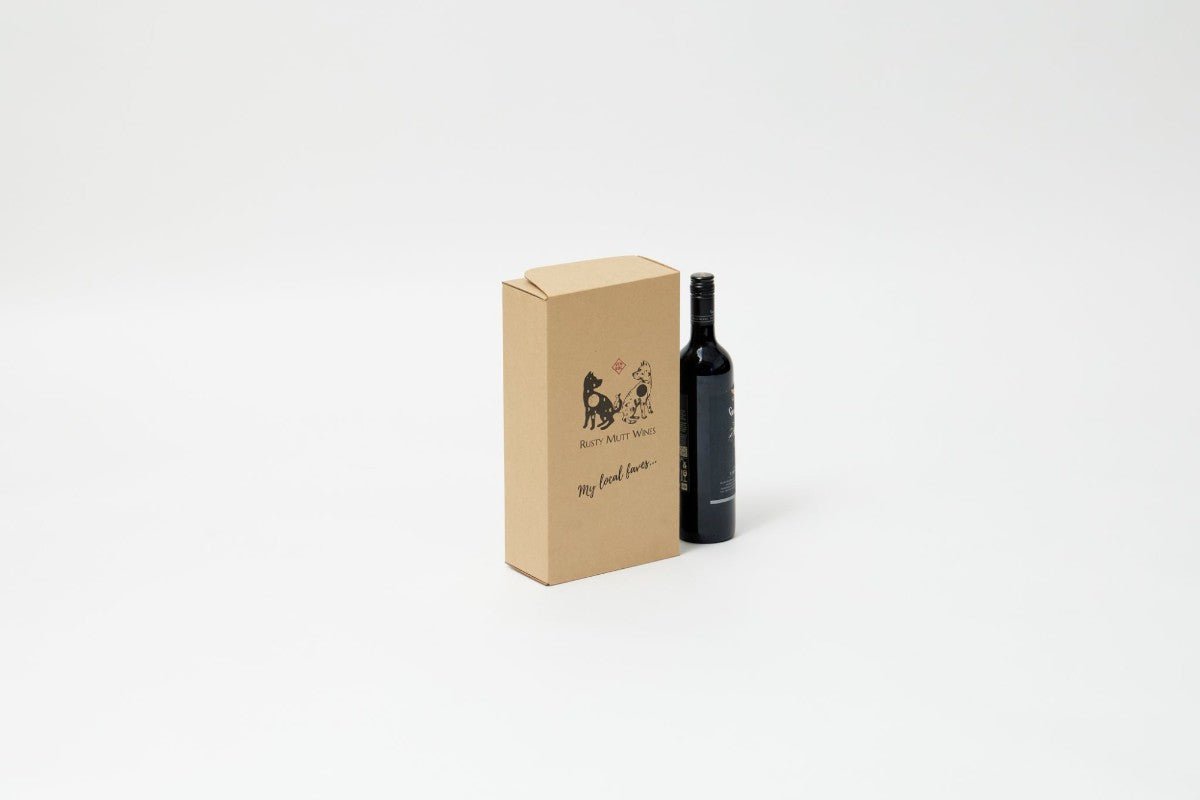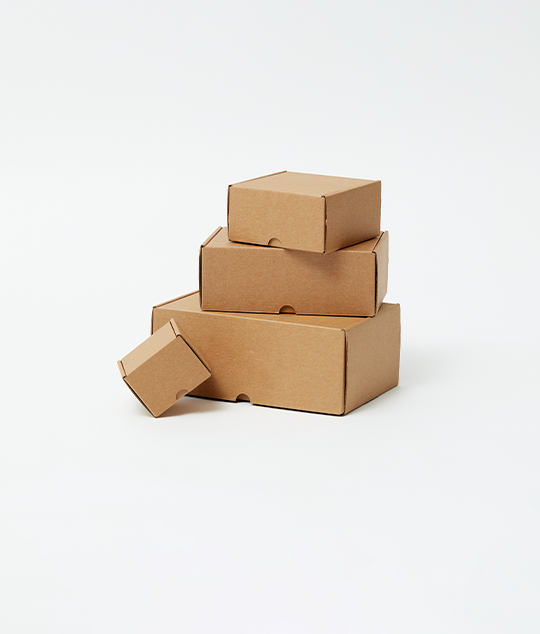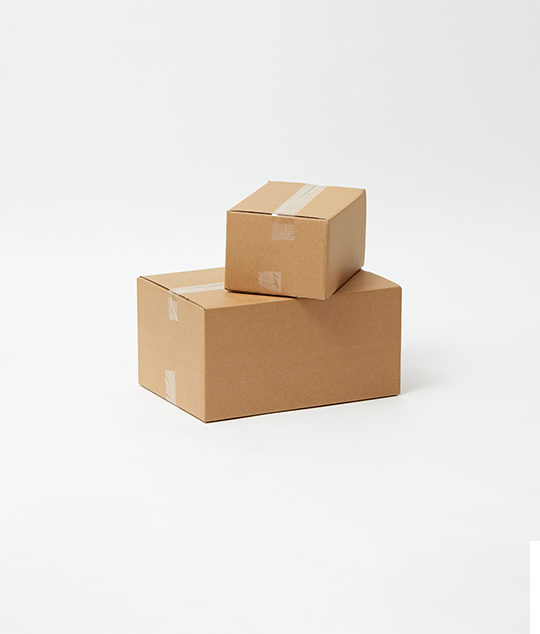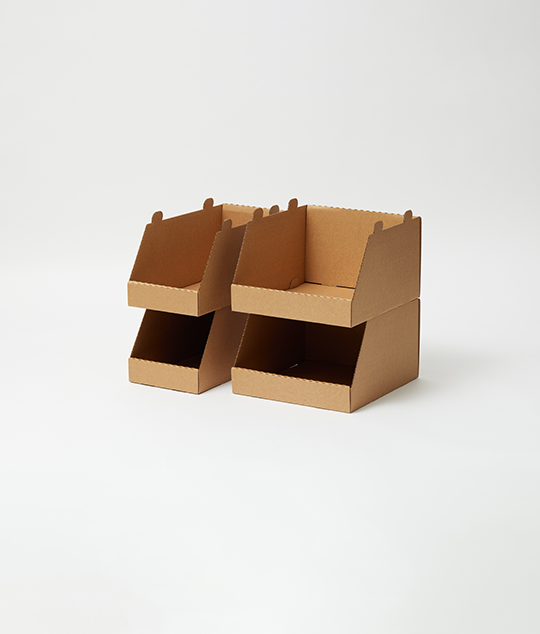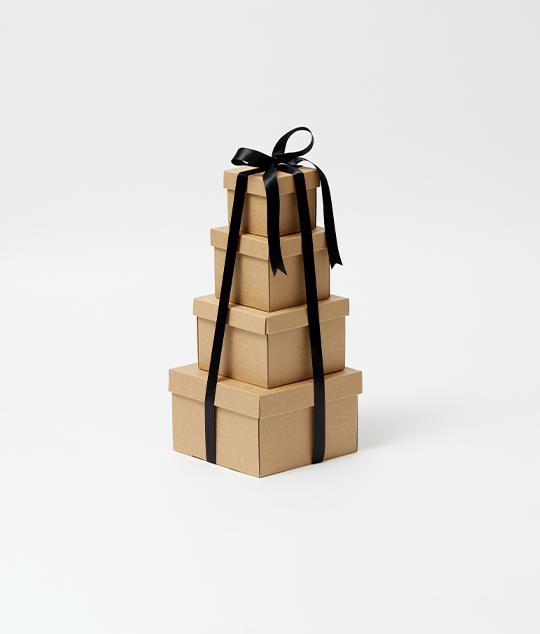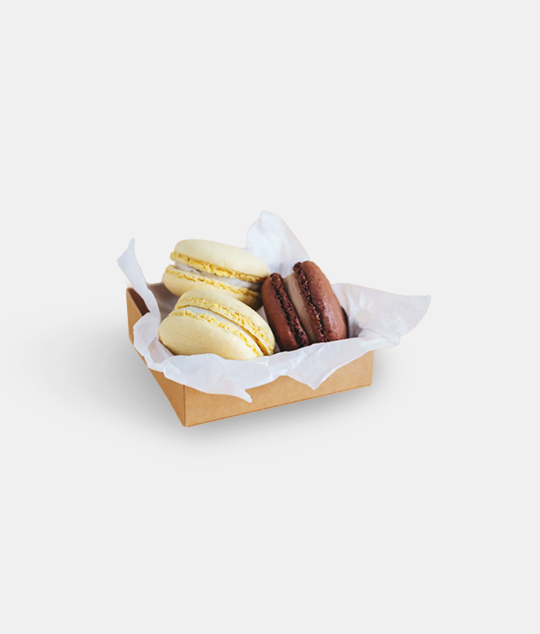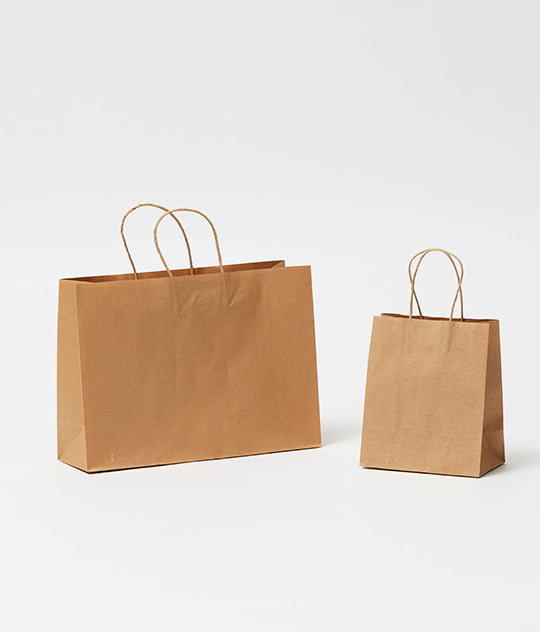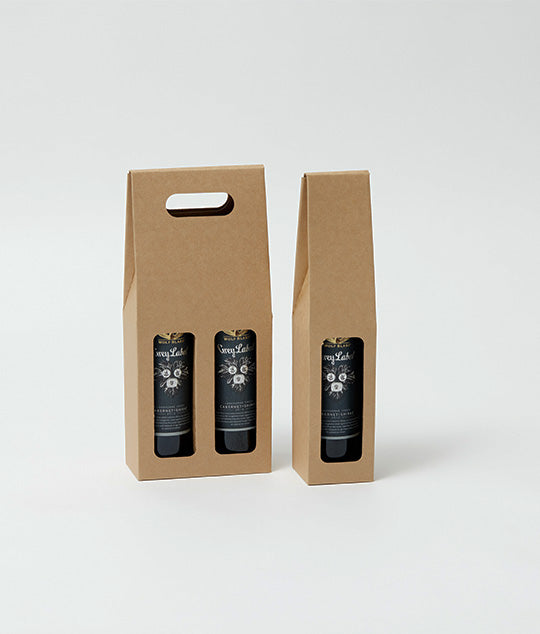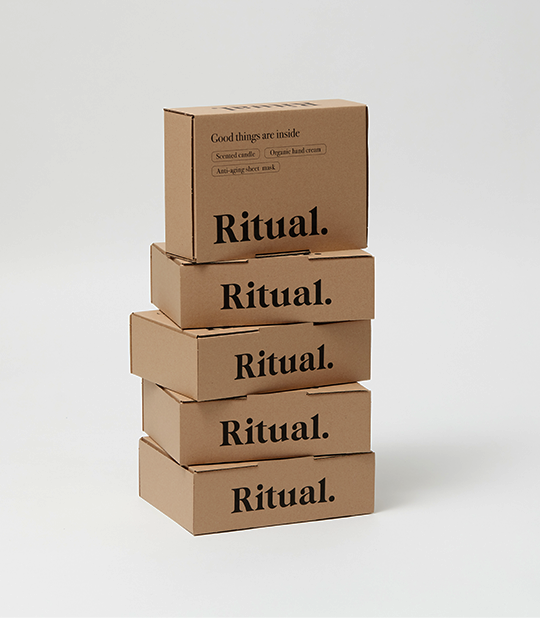
Many businesses hesitate when it comes to investing in custom packaging, fearing high costs and uncertain returns. But the truth is, custom packaging offers tremendous value beyond just aesthetics. In this blog post, we will explore the real value of custom product packages and address the common concerns about cost. Join us as we uncover the role that custom packaging can play in increasing brand recognition, customer loyalty, and ultimately, your bottom line.
How much does custom packaging cost?
Many businesses struggle to determine the cost of creating customized packaging in order to enhance their brand and improve the customer experience. To most, custom packaging seems like a costly venture.
However, custom packaging is also key to brand identity and the unboxing experience. It’s important to see packaging not only as an expense but also as an investment in your small business.
As such, you also need to consider the various factors that come into play when determining custom packaging cost. Your choice in materials, printing methods, design services - all these elements contribute to how much custom packaging costs.
Understanding these components can help you make informed decisions when investing in custom packaging solutions that align with both your branding goals and packaging budget constraints.
Read on to learn how you can have attractive, effective B2B or retail packaging without breaking the bank!
Table Of Contents:
Overview of Custom Packaging Options and Cost Factors
Why Quality Materials Matter For Custom Packaging
Cost Considerations for Different Types of Packaging
Enhancing Customer Experience through Custom Packaging
Savings Tips for Your Custom Packaging Project
FAQs on How Much Does Custom Packaging Cost
Striking a Balance Between Quality and Affordability
Overview of Custom Packaging Options and Cost Factors
Custom packaging has become an essential aspect of branding for businesses of all sizes. It allows companies to differentiate themselves from their competitors and create a unique customer experience.
Custom boxes, in particular, are a popular option for businesses to provide a personalized touch to their products. However, the cost of custom packaging can vary depending on several factors, such as the material used, box design, and printing method.
To determine how much does custom packaging cost, businesses should research their options and consider their budget and needs. Overall, custom packaging offers a way to elevate a brand and leave a lasting impression on customers.
Why Quality Materials Matter For Custom Packaging
Custom packaging is a crucial aspect of branding and marketing your product. The box designs and product packaging not only represent your brand but also give customers a sneak peek into what they can expect from your product. Investing in premium packaging can make all the difference in attracting and retaining customers.
However, it's important to note that the quality of materials used in custom packaging should not be overlooked. The box cost may be higher for premium materials, but the benefits far outweigh the cost.
Quality materials ensure that the packaging not only looks great but also protects your product during transportation and storage. In short, opting for quality materials is a smart move when it comes to custom packaging.
Cost Considerations for Different Types of Packaging
In the world of custom packaging, costs can vary greatly. Many elements can affect the cost of custom packaging:
- Packaging types
- Box Designs
- Printing Options
- Luxury Packaging
Each of these factors will have an impact on the overall cost of your packaging. By carefully considering your options and making informed decisions, you can create effective packaging that meets your needs without breaking the bank.
Custom Packaging Types
Whether you need simple, cost-effective options or are looking to create luxury packaging that will stand out from the competition, there are many options available to help you design the perfect packaging for your product.
Below is a list of common types of custom packaging:
Custom Printed Boxes: Paperboard or kraft boxes can be personalized with your brand's logo, design, and messaging, making them perfect for brand recognition.
Custom Folding Cartons: Often used for retail packaging, these cartons are customizable in terms of size, shape, and design.
Custom Labels and Stickers: Labels and stickers can be tailored to your brand's identity, adding a branded touch to your products or packaging.
Custom Bags and Totes: Ideal for retail, these bags can be customized with your branding and are available in various materials, including paper and fabric.
Custom Wrapping Paper: Perfect for gift shops or special occasions, wrapping paper can be designed with your brand's visuals.
Custom Tissue Paper: Custom tissue paper with your logo or design adds elegance and protection when wrapping products.
Custom Mailer Boxes: These are designed for shipping and can be customized with branding to create a memorable unboxing experience.
Custom Inserts and Dividers: Customized inserts and dividers keep products secure and organized within the packaging.
Custom Shipping Labels: Shipping labels can be customized with your brand's information, making your packages easily identifiable.
Custom Printed Tape: Branded packaging tape adds a professional touch to your shipments.
Custom Printed Pouches: Pouches are versatile and can be customized for various products, from food to cosmetics.
Custom Printed Envelopes: Envelopes with custom designs or branding are commonly used for mailing important documents or marketing materials.
Custom Printed Hang Tags: Hang tags can be personalized with product information, pricing, and branding, enhancing the presentation of your products.
Custom Printed Ribbons and Bows: These decorative elements can be personalized with your brand's colors and logo, adding a touch of elegance.
Custom Printed Glass and Plastic Containers: Custom containers are often used for cosmetics, food products, and more.
Custom Printed Shrink Sleeves: Shrink sleeves offer 360-degree branding opportunities for bottles and containers.
Custom Printed Hang Bags: Ideal for clothing retailers, these bags can be customized with branding and product information.
Custom Printed Mailer Envelopes: These envelopes are designed for mailing marketing materials, catalogs, and promotional items.
These are just a few examples of the many types of custom packaging available to businesses to help them stand out and create a memorable brand experience.
Material Choices: Crucial Determinants of Cost
The choice of packaging material is not just about aesthetics; it also plays a major role in determining costs. Whether you opt for corrugated boxes that meet everyday needs or rigid boxes that add a touch of luxury, each material comes with its own price tag and advantages.
The type and finish of the material not only affect the visual appeal but also have significant implications on the final pricing.
The size of the package must be taken into account, as it can affect the total cost and determine whether a product will fit in its box. Products come in various shapes and sizes, which means their packages must accommodate them. Optimal shipping requires different box sizes, further impacting the total custom packaging cost.
Analyzing Various Packaging Materials & Options
The packaging industry offers a wide range of materials, each with its own unique qualities. From luxurious options that enhance your brand's image to more cost-effective choices like folding cartons, there is a solution for every business need.
In essence, understanding the different types of packaging materials is crucial when developing your product presentation strategy. But it doesn't end there.
The materials commonly used for custom packaging include:
Cardboard: Cardboard is a versatile and cost-effective material used for various types of packaging, including boxes and cartons.
Paperboard: Paperboard is thicker than standard paper and is often used for packaging boxes, folding cartons, and product sleeves.
Kraft Paper: Known for its natural and rustic look, kraft paper is frequently used for eco-friendly and organic product packaging.
Corrugated Board: Corrugated board consists of multiple layers of cardboard, providing durability and protection, commonly used for shipping boxes.
Plastic: Plastic packaging is versatile and can be used for various products. Common types include PET, PVC, and HDPE.
Glass: Glass is used for packaging various products like cosmetics, beverages, and food items. It offers a premium and recyclable option.
Metal: Metal packaging, often in the form of cans or tins, is used for items like canned foods, beverages, and cosmetics.
Wood: Wooden packaging is often used for specialty items, luxury products, and gift packaging.
Fabric: Fabric packaging, such as cotton or linen bags, is used for luxury items, jewelry, and high-end products.
Foam: Foam inserts and padding are used for protective packaging to prevent damage during shipping.
Plastic Film: Plastic films, including polyethylene and polypropylene, are used for packaging products like snacks, produce, and frozen goods.
Foils: Foil packaging, often aluminum or metallic, is used for products that require a barrier against moisture and light, like coffee or snacks.
Biodegradable Materials: Environmentally friendly materials like biodegradable plastics and plant-based packaging are gaining popularity.
Recycled Materials: Packaging made from recycled materials is an eco-conscious choice and helps reduce waste.
Cardstock: Heavier than standard paper, cardstock is used for tags, labels, and high-quality packaging inserts.
Cellophane: Cellophane is a transparent and flexible material used for wrapping gifts and packaging perishable items.
Acetate: A clear and rigid plastic material, acetate is used for transparent packaging and boxes.
Metalized Films: These films offer a metallic finish and are used for packaging items like chocolates and snacks.
Velvet: Velvet packaging adds a luxurious and soft touch, often used for jewelry and high-end gift items.
Bamboo: Sustainable and eco-friendly, bamboo is used for a variety of packaging, including cosmetics and food products.
Corrugated Boxes
One popular choice among e-commerce businesses is the corrugated box. Corrugated boxes are not only affordable but also highly resilient. These sturdy containers provide excellent protection for goods during transit without breaking the bank. Their versatility makes them a preferred choice for many businesses.
In addition to being budget-friendly, corrugated boxes are also eco-friendly. Given their easily recyclable materials, corrugated boxes are an appealing choice for businesses that seek to be both efficient and eco-friendly.
Folding Cartons
Folding cartons is one of the popular cost-effective solutions for products that don't require high levels of protection. They combine functionality and aesthetics, providing both protection and visual appeal without straining your budget.
Bulk orders often result in significant cost savings due to economies of scale. This significantly reduces the per-unit cost, making folding cartons even more appealing for businesses looking to optimize their packaging budget without compromising on quality or design.
Rigid Boxes
If you prioritize luxury over cost-effectiveness, rigid boxes may be more suitable for your needs. Often associated with premium products, rigid boxes enhance the perceived value of the items they contain due to their upscale feel.
When selecting custom packaging, it is important to carefully consider factors such as cost, quality, functionality, brand image impact, and the potential enhancements offered by various printing methods available for your preferred custom packaging type.
Printing Methods and Their Impact
Different custom printing options have different price tags. Digital or offset printing, for example, can have a significant impact on your overall packaging budget.
Unpacking Printing Methods for Custom Packaging
Two primary printing methods used in custom packaging are digital printing and offset printing, each with their own benefits that can influence the cost and quality. Each method has its own advantages and can impact both the quality and cost of the packaging.
Digital Printing Pros and Cons
For those working with a limited budget, digital printing is an excellent option for smaller projects due to its quick turnaround time.
- You'll appreciate the speedy delivery time
- Bear in mind that color consistency can vary somewhat
- Just note it won't be as high-res as offset printing
Offset Printing Pros and Cons
On the other hand, offset printing is a traditional method that involves transferring ink from plates onto rubber blankets, which then press against the surface material.
- Sharp and clean prints with superior image quality
- Typically comes at a higher price point.
Finding the Balance Between Quality and Cost
When dealing with personalized packaging, it is essential to strike a balance between excellent outcomes and economical expenses on custom printing. This often involves choosing between digital and offset printing based on factors such as order size, budget constraints, desired quality level, and production timeline considerations.
Put simply, digital printing is more affordable for smaller batches, while offset printing tends to be more cost-effective for larger orders.
Important Takeaway:
Cracking the code on custom packaging costs involves weighing factors like printing methods, design intricacy, and material choice. Digital printing is a budget-friendly option ideal for smaller projects, but it may lack in color consistency and detail compared to its pricier counterpart - offset printing. Balancing quality with cost means making smart choices based on your specific needs.
Impact of Design on Branding & Packaging Costs
The design services that your business leverages are instrumental in shaping and bolstering your brand identity. Crafting a package design that aligns seamlessly with your overarching branding strategy can foster consistency, enhance customer recognition, and strengthen trust.
It's essential to take into consideration the financial ramifications, however. The cost of structural and artwork design services can vary depending on the provider you choose. Obtaining artwork designs independently from manufacturers often leads to higher costs.
Balancing Quality with Cost: A Crucial Business Challenge
A significant challenge for businesses is finding the right balance between high-quality designs that amplify their brand identity and keeping packaging costs in check. It's not just about creating visually captivating packages but also ensuring they are economically feasible for the company.
Achieving this balance requires careful planning, budget allocation, and negotiation skills when dealing with service providers or manufacturers who offer competitive rates without compromising quality.
Sustainable Practices within Package Design: An Emerging Trend
An emerging trend in package design is the integration of sustainable practices, which consumers increasingly appreciate alongside visual appeal. However, these considerations may increase initial packaging expenses due to potentially higher costs of materials or production techniques.
Shipping & Logistics Considerations in Custom Packaging Costs
The financial aspects of custom printed product creation don't end at design and material expenses. A significant component often overlooked is the shipping costs associated with delivery logistics.
Air Shipping vs Ground Shipping: What's Your Choice?
Your choice between air or ground transportation for your products can significantly influence the total shipping costs. While air shipping promises speed, it comes with a heftier price tag due to higher fuel consumption and expedited delivery times. On the flip side, ground transportation may be more budget-friendly but demands patience as it takes longer.
How Size and Weight Play into Cost Calculations
Beyond the mode of transport, other factors like packaging dimensions - size and weight - also play an essential role in determining overall shipment pricing. The logic is simple: larger, heavier product boxes demand more resources for safe transit, thereby escalating costs.
Understanding these nuances can help businesses strategize their packaging approach effectively without compromising on quality or customer satisfaction.
Enhancing Customer Experience through Custom Packaging
As we’ve previously noted, custom packaging is a pivotal aspect in enriching the customer experience.
This is not a frivolous expense; it's an investment in your brand image.
The unboxing experience is more than just opening a box. It's about creating a memorable moment for customers by showcasing the quality and attention to detail that goes into each package.
This holds particularly true for luxury items where high-end packaging might not just be anticipated but appreciated by customers who seek a superior unboxing experience.
Fostering Brand Loyalty with Quality Packaging
Your product may be exceptional, but what sets it apart? Is it wrapped in plain brown paper, or does its packaging exude luxury?
In today's competitive market, the power of good quality custom-printed boxes cannot be underestimated. They enhance customer experiences by adding value beyond mere functionality.
Making Your Mark with Memorable Unboxing Experiences
Consider this: when your customers receive their order, they're not just receiving a product - they're having an experience. And every aspect of that experience reflects on your brand.
An exciting unboxing experience can generate anticipation and give the impression of opening a present. It builds anticipation and makes receiving the item feel like unwrapping a gift.
To ensure a memorable unboxing experience, businesses should pay attention to every little detail, starting from the packaging design. A well-designed box with eye-catching graphics and branding elements sets the stage for what lies inside. Customized inserts, such as tissue paper, stickers, or personalized notes add a personal touch and make customers feel special.
Furthermore, choosing unique materials or adding unconventional features to the packaging can greatly enhance the excitement of unboxing. These could include hidden compartments, interactive elements like QR codes or augmented reality features, or even scented packaging that complements the product aroma.
By focusing on all these aspects and designing exceptional unboxing experiences, businesses can create strong emotional connections with their customers and establish themselves as standout brands in an increasingly competitive marketplace.
Savings Tips for Your Custom Packaging Project
For businesses of any size, it's possible to create custom packaging projects that are both cost-effective and aesthetically pleasing.
Below are some tips on how you can save money with your custom packaging:
Materials: Choosing the Right Balance
The choice of materials for custom packaging can have a significant impact on the overall cost. Different materials have different price points, and businesses need to consider their budget and the desired level of quality. For example, using high-end materials like premium paperboard boxes or sustainable options may increase the cost, but it can also enhance the perceived value of the product and improve customer satisfaction.
Design: Balancing Creativity and Cost
The design of custom packaging is another factor that affects the cost. Intricate and complex designs may require more time and resources to produce, leading to higher costs. Conversely, simpler designs can be more economical. Businesses should find a balance between creativity and cost, ensuring that the packaging reflects their brand identity while still being within their budget.
Technology: Streamlining the Process
Advancements in technology have revolutionized the custom packaging industry, offering opportunities to reduce costs. Automation tools and software can streamline the packaging process, reducing labor costs and minimizing errors. By incorporating technology into the production process, businesses can achieve higher efficiency and cost savings.
Quantity: Bulk Ordering for Savings
Another cost-saving strategy is bulk ordering. Suppliers often offer discounts for large quantity orders. This allows you to save on per-unit costs. Find a packaging company that helps you save money by offering lower prices if you meet their minimum order.
At PackQueen, for instance, you’ll automatically see the cheaper price list for bulk quantities of box packaging on our website. Bulk ordering also helps streamline inventory management and reduces the need for frequent reordering.
By planning ahead and ordering in larger quantities, businesses can take advantage of cost savings and save money on their custom product boxes:
- Bulk orders generally result in cost savings due to economies of scale - buying more means paying less per unit.
- You don't have to compromise on aesthetics; instead, work closely with a packaging company who can offer innovative solutions within budget constraints.
Important Takeaway:
Cracking the cost code of custom packaging involves a savvy blend of material selection, design creativity, tech integration and smart ordering. Opting for high-quality materials can elevate product value while striking designs boost brand identity. Embracing technology can slash labor costs and errors, while bulk orders offer sweet savings.
FAQs on How Much Does Custom Packaging Cost
How much does a packaging design cost?
Packaging design costs can vary widely, starting from around $300 to over $5000, depending on the complexity of the design and expertise required.
How much should my packaging cost?
Your packaging costs will depend on factors like materials used, printing methods chosen, and quantity ordered. Aim for 1-10% of your retail price.
Why is custom packaging so expensive?
Custom packaging tends to be pricier due to its uniqueness in material choice, intricate designs, and printing which require more resources and time.
How much does custom cardboard packaging cost?
The price of custom cardboard boxes can range between $0.25 - $5 per box based on size, quantity purchased, and customization details.
Striking a Balance Between Quality and Affordability
Grasping the components that impact custom packaging cost is indispensable for organizations hoping to accomplish a perfect harmony between quality and price. By considering materials, design, technology, and quantity, businesses can make informed decisions and find cost-effective solutions that meet their packaging needs.
Contact one of our packaging experts today
